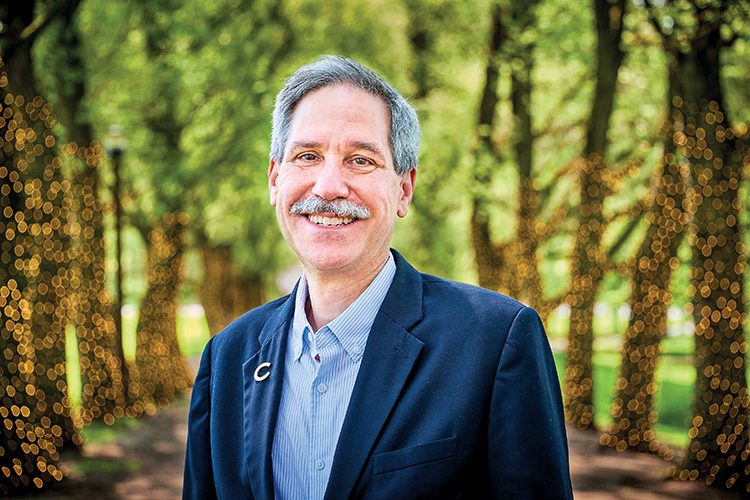Beginning in 2024, approximately 50,000 buildings in New York City must reduce their greenhouse gas emissions, according to the new Climate Mobilization Act. Like a restaurant’s health inspection rating, buildings’ energy efficiency grades will also have to be posted for all to see, starting
in 2020.
For green building attorneys like Richard J. Sobelsohn ’82, P’19, this means ensuring that commercial real estate clients are not only in compliance with the law, but also earning grades that will make the buildings attractive to tenants. As vice president, legal, for Cohen Brothers Realty Corporation in New York, Sobelsohn also oversees contracts with the vendors hired for the building upgrades — from the HVAC systems to the elevators.
It’s complex work, with many layers. “In some cases, these are uncharted territories,” says Sobelsohn, who has been on the forefront of this emerging field since 2008.
Also an adjunct professor at Fordham University School of Law, Brooklyn Law School, Benjamin N. Cardozo School of Law, and New York Law School, he provides an overview:
When I pursued the LEED Accredited Professional designation, it was an entirely new language for me. I had to learn about building products, design, how buildings affect occupant health, and government requirements. It was harder than the bar exam, but I passed it the first time I took it in 2008. In those days, only a smattering of municipalities required sustainable building practices, but now, most do.
Statistics have shown that employees who work in green buildings have 2.9 fewer sick days a year. Also, in a green building where there’s more natural lighting and views to the outdoors, workers are 5 to 8 percent more productive. So if you’re a commercial tenant that’s a large corporate entity and you have thousands of employees, this is a real increase in the bottom line. That’s in addition to the economic benefits of the tremendous energy-saving attributes of most green buildings.
One reason why employees are healthier in green buildings is because green cleaning companies use nontoxic chemicals. We touch our desks all the time, and quite often in the business world we’re eating at our desks. So, if the cleaning company is using a toxic chemical and we’ve touched the desk but didn’t appropriately wash our hands, when we eat our lunches, we’re putting that in our mouths. That’s why people tend to get sicker in a non–green building.
When I counsel a client that’s a developer, if we’re promising a tenant a certain level of certification [e.g., LEED, Green Globes, Energy Star] and that’s not being delivered, the tenant may have a right to terminate the lease or get a rent reduction. So, for example, if an office building owner has tenants who are relying on the sustainability of the building, and the green cleaning company doesn’t use nontoxic materials, there are liabilities that both parties may face. The attorneys are the ones who have to watch out for those types of situations because they have to protect their clients, whether they are the landlords or those companies supplying products or services to them.
One of the hot topics in green building issues is figuring out how to stay in compliance for the long term. When you have a landlord doing ground-up construction, they’re trying to determine what the local municipality will require when the building is done. They’re filing for permits today but maybe there’s a two-year window between the time they put a shovel in the ground and the building is completed. Also, if we get LEED Gold certification today, when we go for renewal years later, are those requirements going to be increased? It’s a moving target. We often look to third-party nonprofit rating agencies for guidance.
In addition to new green buildings, a lot of existing buildings have converted. My favorites are the Empire State Building, Chrysler Building, and the Helmsley Building. All of them were built in the 1920s and ’30s, and now all of them are LEED Gold certified.

